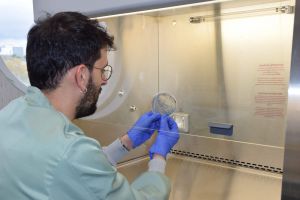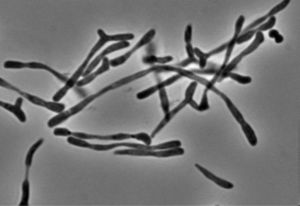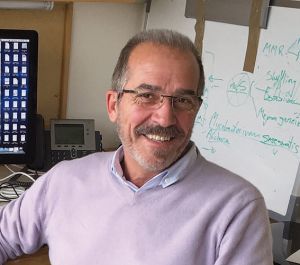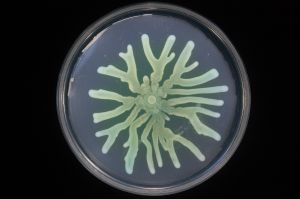• El CSIC lanza el programa Cicerón para mostrar la investigación de sus laboratorios al servicio de la sociedad
• La institución invita a empresas, políticos y periodistas para conocer el trabajo de sus equipos en la tarea de afrontar desafíos sociales como la resistencia a los antibióticos
La primera jornada, dedicada la resistencia a los antibióticos, se celebra hoy, 14 de marzo, con una visita al Centro Nacional de Biotecnología (CNB-CSIC), en el campus de la Universidad Autónoma de Madrid, y una sesión de ponencias con seis investigadores del CSIC (Daniel López, Ana de la Torre, Álvaro San Millán, Victoria Moreno, Fernando Herranz y Pilar García) en la Librería Científica del CSIC, en el campus central del organismo en Madrid, moderada por la inmunóloga Margarita del Val y el genetista Lluis Montoliu. El programa Cicerón cuenta con el apoyo de la Fundación General CSIC.
El uso indiscriminado de los antibióticos, tanto en los seres humanos como en los animales, ha causado la proliferación de cepas de bacterias con genes de resistencia a los fármacos -las denominadas superbacterias-, lo que está provocando que cada vez sean más ineficaces para atajar infecciones. Se trata de un hecho especialmente preocupante en entornos clínicos porque la ineficacia de los antibióticos puede convertir cirugías menores en un riesgo mortal. Según Naciones Unidas, si no se controla la creciente resistencia a los antibióticos podría llegar a causar diez millones de muertes al año en 2050 y convertirse en la primera causa de muerte en el mundo.
- The low affinity of PBP3SAL for current beta-lactam antibiotics might explain why antibiotic therapy is not sufficient to eradicate salmonellosis even after symptoms subside.
Up to 10% of patients with salmonellosis infections may have relapses following treatment with third-generation cephalosporins and remission of initial symptoms. Strikingly, the bacterial strains isolated from patients during the relapse maintain their susceptibility to the antibiotic used in the first place. This anomaly suggests that Salmonella enterica might remain in intracellular locations in which drug accessibility is reduced.
Beta-lactam antibiotics block the crosslinking required to maintain the peptidoglycan meshwork, the main component in bacterial cell walls. These antibiotics target penicillin-binding proteins (PBPs), which catalyze the incorporation of new material into the peptidoglycan during bacterial growth. In Gram-negative bacteria, two proteins from this family, PBP2 and PBP3, play essential roles in cell elongation and division, respectively.
Los microorganismos resistentes a antibióticos necesitan readaptar sus procesos metabólicos para no perder capacidad de supervivencia. Bloquear estos procesos de reorganización de la maquinaria interna de las bacterias puede ofrecer nuevas estrategias en la lucha contra los patógenos resistentes a antibióticos.
A través de la participación del Centro Nacional de Biotecnología (CNB) y del Centro de Investigaciones Biológicas (CIB), el CSIC participa en una iniciativa, junto a más de 30 universidades europeas, institutos de investigación y empresas, para desarrollar nuevos antibióticos frente a patógenos Gram- negativos. El programa, denominado ENABLE, tiene una duración de 6 años y está liderado por GlaxoSmithKline y la Universidad de Uppsala. Cuenta además con el apoyo de la Iniciativa sobre Medicamentos Innovadores (IMI).
 La crisis de los antibióticos
La crisis de los antibióticos
El mundo se enfrenta a una creciente epidemia de resistencia a los antibióticos, sin embargo sólo se han introducido en el mercado dos nuevas clases de antibióticos en los últimos 30 años. El descubrimiento y desarrollo de nuevos antibióticos es esencial para mantener los avances médicos, pero plantea retos científicos, clínicos y financieros importantes, en particular para los antibióticos activos contra las bacterias Gram- negativas (como E. coli). Estas bacterias tienen barreras eficaces contra las drogas, su tratamiento resulta difícil, y adquieren resistencias con facilidad. Los nuevos antibióticos que se descubren han de ser siempre utilizados con precaución para retrasar la aparición de resistencias en los microbios que se quieran tratar, por lo que se dificulta la amortización de las inversiones realizadas para su desarrollo.
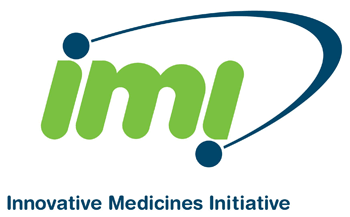 Colaboración privada y pública
Colaboración privada y pública
En respuesta a estas barreras en el desarrollo de nuevos antibióticos, IMI, una asociación de investigación entre la Comisión Europea y las principales compañías farmacéuticas (a través de la EFPIA, la Federación Europea de Industrias y Asociaciones Farmacéuticas), ha puesto en marcha una serie de proyectos llamados ND4BB, unas siglas con cierta gracia en lengua inglesa que significan “nuevas drogas para bichos malos”. Su propósito es superar los cuellos de botella en el desarrollo de nuevos antibióticos y propugnar que se usen de forma eficaz.
El proyecto ENABLE, el tercero en la serie ND4BB, agrupa 13 países y reúne a 32 socios con la misión de establecer una importante herramienta para encontrar fármacos antibacterianos promocionando el avance de los programas de investigación a través del descubrimiento de nuevos compuestos y de la realización de la primera fase de ensayos clínicos. La cartera de compuestos inicial se ampliará a través de convocatorias abiertas para mantener un flujo de desarrollo que logre así el objetivo final que es completar esa primera fase de ensayos clínicos para obtener en 2019 al menos un antibiótico nuevo para tratar las infecciones por bacterias Gram- negativas.
La inversión conjunta pública y privada a través de IMI responde a cambios en la estrategia para obtener algunos medicamentos que, como los antibióticos, necesitan una inversión arriesgada para su descubrimiento y desarrollo. Esta colaboración tiene la misión de movilizar en Europa la experiencia de las universidades, institutos de investigación y la industria para responder a los desafíos globales. Coloca a Europa en la vanguardia de la investigación en colaboración entre la industria y el mundo académico para responder a los retos que presenta la salud.
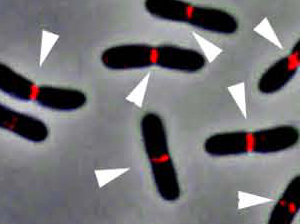 El CNB: impedir la proliferación de patógenos
El CNB: impedir la proliferación de patógenos
“Estudiando la bacteria E. coli como modelo, en el Centro Nacional de Biotecnología del CSIC,” manifiesta Miguel Vicente, “hemos obtenido conocimientos y experiencia técnica del más alto nivel para ensayar la eficacia de nuevos antibióticos en la lucha contra patógenos Gram-negativos”. A lo largo del proyecto ENABLE el CNB recibirá compuestos desarrollados por otros socios, como la fundación MEDINA, la Universidad de Barcelona y la empresa Biomol-Informatics para determinar si frenan el crecimiento o la proliferación de la bacteria. “Cuando lo sepamos, realizaremos ensayos más detallados para averiguar si alguno de ellos bloquea la máquina molecular que dirige la división de la bacteria y así proponer modificaciones de su estructura química que los hagan más eficaces”.
Current Opinion in Pharmacology
Martínez JL, Baquero F, Andersson DI.
Market launching of a new antibiotic requires knowing in advance its benefits and possible risks, and among them how rapidly resistance will emerge and spread among bacterial pathogens. This information is not only useful from a public health point of view, but also for pharmaceutical industry, in order to reduce potential waste of resources in the development of a compound that might be discontinued at the short term because of resistance development.Most assays currently used for predicting the emergence of resistance are based on culturing the target bacteria by serial passages in the presence of increasing concentrations of antibiotics. Whereas these assays may be valuable for identifying mutations that might cause resistance, they are not useful to establish how fast resistance might appear, neither to address the risk of spread of resistance genes by horizontal gene transfer.
In this article, we review recent information pertinent for a more accurate prediction on the emergence and dispersal of antibiotic resistance.
Lioy VS, Rey O, Balsa D, Pellicer T & Alonso JC.
The emergence and spread of pathogenic bacteria that have become resistant to multiple antibiotics through lateral gene transfer have created the need of novel antimicrobials. Toxin–antitoxin (TA) modules, which have been implicated in plasmid maintenance and stress management, are ubiquitous among plasmids from vancomycin or methicillin resistant bacteria. In the Streptococcus pyogenes pSM19035-encoded TA loci, the labile ε antitoxin binds to free ζ toxin and neutralizes it. When the ζ toxin is freed from the ε antitoxin, it induces a reversible state of growth arrest with a drastic reduction on the rate of replication, transcription and translation. However, upon prolonged ζ toxin action, the cells can no longer be rescued from their stasis state.A compound that disrupts the ε·ζ interaction can be considered as an attractive antimicrobial agent. Gene ε was fused to luc (Luc-ε antitoxin) and ζ to the gfp gene (ζ-GFP). Luc-ε or ε antitoxin neutralizes the toxic effect of the ζ or ζ-GFP toxin. In the absence of the antitoxin, free ζ or ζ-GFP triggers a reversible loss of cell proliferation, but the ζK46A-GFP variant fails to block growth. Bioluminescence resonance energy transfer (BRET) assay was developed for high-throughput screening (HTS). To develop the proper controls, molecular dynamics studies were used to predict that the Asp18 and/or Glu22 residues might be relevant for ε·ζ interaction. Luc-ε efficiently transfers the excited energy to the fluorescent acceptor molecule (ζ-GFP or ζK46A-GFP) and rendered high bioluminescence BRET signals. The exchange of Asp18 to Ala from ζ (D18A) affects Luc-ε·ζD18A K46A-GFP interaction.
In this study, we validate the hypothesis that it is possible to disrupt a TA module and offer a novel and unexploited targets to fight against antibiotic-resistant strains.
COOKIES POLICY
A cookie is a text file that is stored on your computer or mobile device via a web server and only that server will be able to retrieve or read the contents of the cookie and allow the Web site remember browser preferences and navigate efficiently. Cookies make the interaction between the user and the website faster and easier.
General information
This Website uses cookies. Cookies are small text files generated by the web pages you visit, which contain the session data that can be useful later in the website. In this way this Web remembers information about your visit, which can facilitate your next visit and make the website more useful.
How do cookies?
Cookies can only store text, usually always anonymous and encrypted. No personal information is ever stored in a cookie, or can be associated with identified or identifiable person.
The data allow this website to keep your information between the pages, and also to discuss how to interact with the website. Cookies are safe because they can only store information that is put there by the browser, which is information the user entered in the browser or included in the page request. You can not run the code and can not be used to access your computer. If a website encrypts cookie data, only the website can read the information.
What types of cookies used?
The cookies used by this website can be distinguished by the following criteria:
1. Types of cookies as the entity that manages:
Depending on who the entity operating the computer or domain where cookies are sent and treat the data obtained, we can distinguish:
- Own cookies: are those that are sent to the user's terminal equipment from a computer or domain managed by the editor itself and from which provides the service requested by the user.
- Third party cookies: these are those that are sent to the user's terminal equipment from a machine or domain that is not managed by the publisher, but by another entity data is obtained through cookies.
In the event that the cookies are installed from a computer or domain managed by the editor itself but the information collected by these is managed by a third party can not be considered as party cookies.
2. Types of cookies as the length of time that remain active:
Depending on the length of time that remain active in the terminal equipment can be distinguished:
- Session cookies: cookies are a type designed to collect and store data while the user accesses a web page. Are usually used to store information that only worth preserving for the service requested by the user at any one time (eg a list of products purchased).
- Persistent cookies: cookies are a type of data which are stored in the terminal and can be accessed and treated for a period defined by the head of the cookie, and can range from a few minutes to several years.
3. Cookies types according to their purpose:
Depending on the purpose for which the data are processed through cookies, we can distinguish between:
- Technical cookies: these are those that allow the user to navigate through a web page or application platform and the use of different options or services it exist as, for example, control traffic and data communication, identify the session, access to restricted access parts, remember the elements of an order, make the buying process an order, make an application for registration or participation in an event, use security features while browsing store content for dissemination videos or sound or share content via social networks.
- Customization cookies: these are those that allow the user to access the service with some general characteristics based on a predefined set of criteria in the user terminal would eg language, the type of browser through which you access the service, the locale from which you access the service, etc.
- Analysis cookies: they are those that allow the responsible for them, monitoring and analyzing the behavior of users of the web sites that are linked. The information gathered through such cookies are used in measuring the activity of web sites, application or platform and for the profiling of user navigation of such sites, applications and platforms, in order to make improvements function data analysis how users use the service.
Management tool cookies
This Website uses Google Analytics.
Google Analytics is a free tool from Google that primarily allows website owners know how users interact with your website. Also, enable cookies in the domain of the site in which you are and uses a set of cookies called "__utma" and "__utmz" to collect information anonymously and reporting of website trends without identifying individual users..
For statistics of use of this website use cookies in order to know the level of recurrence of our visitors and more interesting content. This way we can concentrate our efforts on improving the most visited areas and make the user more easily find what they are looking for. On this site you can use the information from your visit for statistical evaluations and calculations anonymous data and to ensure the continuity of service or to make improvements to their websites. For more details, see the link below privacy policy [http://www.google.com/intl/en/policies/privacy/]
How to manage cookies on your computer: disabling and deleting cookies
All Internet browsers allow you to limit the behavior of a cookie or disable cookies within settings or browser settings. The steps for doing so are different for each browser, you can find instructions in the help menu of your browser.
If you decline the use of cookies, since it is possible thanks to the preferences menu of your browser or settings, reject, this website will continue to function properly without the use of the same.
Can you allow, block or delete cookies installed on your computer by setting your browser options installed on your computer:
- For more information about Internet Explorer click here.
- For more information on Chrome click here.
- For more information about Safari click here.
- For more information about Firefox click here.
Through your browser, you can also view the cookies that are on your computer, and delete them as you see fit. Cookies are text files, you can open and read the contents. The data within them is almost always encrypted with a numeric key corresponding to an Internet session so often has no meaning beyond the website who wrote it.
Informed consent
The use of this website on the other hand, implies that you paid your specific consent to the use of cookies, on the terms and conditions provided in this Cookies Policy, without prejudice to the measures of deactivation and removal of cookies that you can take, and mentioned in the previous section.

